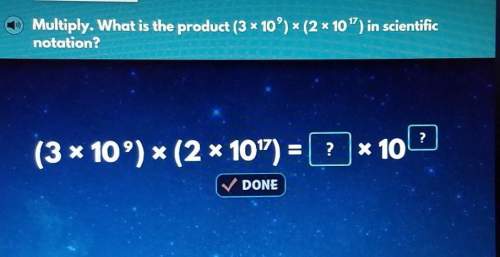
Mathematics, 08.10.2020 01:01 uehlingt39
Leon verified that the side lengths 21, 28, 35 form a Pythagorean triple using this procedure.
Step 1: Find the greatest common factor of the given lengths: 7
Step 2: Divide the given lengths by the greatest common factor: 3, 4, 5
Step 3: Verify that the lengths found in step 2 form a Pythagorean triple: 3 squared + 4 squared = 9 + 16 = 25 = 5 squared
Leon states that 21, 28, 35 is a Pythagorean triple because the lengths found in step 2 form a Pythagorean triple. Which explains whether or not Leon is correct?
Yes, multiplying every length of a Pythagorean triple by the same whole number results in a Pythagorean triple.
Yes, any set of lengths with a common factor is a Pythagorean triple.
No, the lengths of Pythagorean triples cannot have any common factors.
No, the given side lengths can form a Pythagorean triple even if the lengths found in step 2 do not.

Answers: 2


Another question on Mathematics


Mathematics, 21.06.2019 20:00
Afamily has five members. a mom, a dad, two sisters, & a brother. the family lines up single file. what is the probabillity that the mom is at the front of the line
Answers: 1

Mathematics, 21.06.2019 20:00
15 there is a line that includes the point 0,10 and has a slope of 7/4. what is it’s equation in slope intercept form
Answers: 1

Mathematics, 21.06.2019 21:30
Consider the following equation. 1/2x^3+x-7=-3sqrtx-1 approximate the solution to the equation using three iterations of successive approximation. use the graph below as a starting point. a. b. c. d.
Answers: 3
You know the right answer?
Leon verified that the side lengths 21, 28, 35 form a Pythagorean triple using this procedure.
Step...
Questions


Mathematics, 14.01.2021 17:30





Biology, 14.01.2021 17:30




Mathematics, 14.01.2021 17:40

Mathematics, 14.01.2021 17:40

World Languages, 14.01.2021 17:40

History, 14.01.2021 17:40

Mathematics, 14.01.2021 17:40

Mathematics, 14.01.2021 17:40

World Languages, 14.01.2021 17:40



History, 14.01.2021 17:40




